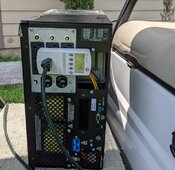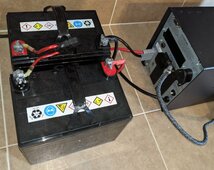It isn't.I thought floating for LFP isn't recommended...
Lithium batteries (including LFP) suffer the most stress at 100% SOC (SLA is at 0% SOC, they like to be constantly float charged). This is why folks with EVs often terminate charge at 80% or 90% to extend the service life of their batteries.
Lithium also wants very precise termination voltages, SLA is very tolerant of sloppy voltages.
I worry that with the wide variance in SLA charging designs and tolerances, an LFP pack will be abused.
Mike C.





